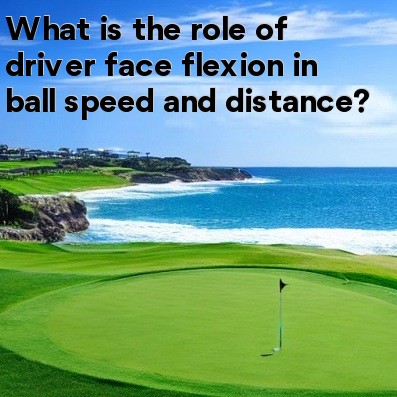
In golf, the role of driver face flexion in ball speed and distance
When it comes to maximizing ball speed and distance off the tee in golf, the role of driver face flexion cannot be overlooked. The ability of the driver's face to flex upon impact with the golf ball has a significant impact on the distance the ball travels.
The concept of driver face flexion revolves around the idea that the face of the driver is designed to deform slightly upon impact, somewhat like a trampoline. This deformation, also known as flexion, allows the face to store energy and then release it back into the ball, propelling it forward with greater velocity.
- Increased Ball Speed:
- One of the key benefits of driver face flexion is the increase in ball speed. As the face flexes upon impact, it creates a trampoline-like effect that amplifies the energy transfer between the clubhead and the ball. This results in higher initial ball speeds, leading to longer drives off the tee.
- Optimized Launch Angle:
- Driver face flexion also plays a role in optimizing the launch angle of the ball. With a flexible face, the driver can provide a more consistent launch angle across the face, even on off-center hits. This helps golfers achieve the ideal launch angle for maximum distance, regardless of where on the face they make contact with the ball.
- Reduced Spin:
- Another advantage of driver face flexion is the potential to reduce spin on the ball. When the face flexes, it allows for a larger sweet spot and a more forgiving clubface. As a result, golfers are less likely to hit the ball with excessive spin, which can lead to sidespin and result in less distance off the tee.
- Improved Energy Transfer:
- Driver face flexion improves the transfer of energy from the clubhead to the ball. By flexing upon impact, the face absorbs a portion of the energy and then releases it back into the ball. This energy transfer allows for a higher coefficient of restitution (COR) – a measure of how efficiently energy is transferred between the club and the ball. A higher COR equates to more energy transfer, resulting in increased ball speed and distance.
It's worth noting that the level of face flexion can vary depending on the design and construction of the driver. Different driver models may incorporate materials or technologies that enhance face flexion, leading to varying levels of ball speed and distance gains.
In conclusion, the role of driver face flexion in golf cannot be underestimated when it comes to maximizing ball speed and distance. The ability of the driver's face to flex upon impact allows for increased ball speed, optimized launch angles, reduced spin, and improved energy transfer. Golfers can benefit from understanding and utilizing the concept of face flexion to improve their driving performance.





